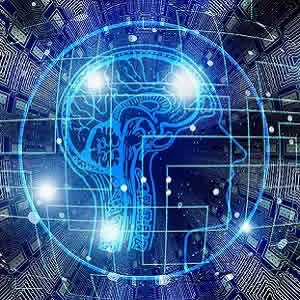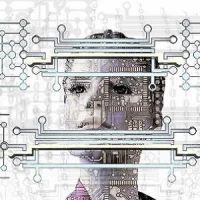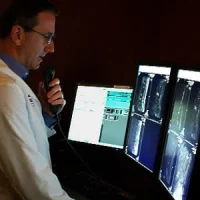There are tremendous opportunities for artificial intelligence (AI) to deliver advances in medical diagnosis and treatment. An inevitable development that is already under way is the distribution of “intelligent instruments” into the healthcare system, according to an article in press in the Journal of the American College of Radiology.
As noted in the article, the integration of AI into radiology imaging modalities has already begun and can be envisioned to eventually impact all facets of image creation, including pre-acquisition, acquisition and postacquisition. This integration, the article explains, includes the implementation of “intelligent instruments” such as CT scanners that can use integrated cameras to detect whether patient position is adequate for the study indication.
As AI technology advances, those same scanners will soon begin to choose and execute an optimised protocol including contrast bolus timing, contrast phases, and dose modulation, and then allow for advanced reconstruction and visualisation such as automatic organ and lesion contouring, textural analysis, and cinematic rendering.
Furthermore, AI can be the foundation for intelligent hospitals and workflows. The article says that, over the next five years, AI will play an increasingly pervasive role in improving efficiency and workflow throughout healthcare. Of note, there are more than 200 AI startups in the healthcare industry that are working on numerous different applications. As methods of deploying this tremendous number of evolving AI tools are needed, the article predicts the emergence of AI application stores where hospital systems can select the platforms that would be most beneficial to them.
While it's difficult to predict how healthcare will evolve through AI, the article says medical professionals should not fear the influence of this rapidly evolving technology.
"Instead of thinking about AI replacing our abilities, we should instead view AI as allowing us to 'level up' what we can accomplish," article authors explain. "In radiology, having AI perform the mundane tasks that humans may struggle with or find interminable, such as pulmonary nodule detection or organ segmentation, as well as the tasks that are simply impossible for humans, such as extracting lesion textural features across multiple contrast phases or sequences, frees us to interact with the images in ways that can push the boundaries of diagnostic science."
Indeed, the use of AI "can add depth to our readings" that can produce tangible benefits to patient care, the authors add.
Image Credit: Pixabay
References:
Powell K, Fishman EK, Horton KM, Johnson PT, Rowe SP (2018) What Health Care Can Learn From Self-Driving Vehicles. J Am Coll Radiol. Available online 31 May 2018. https://doi.org/10.1016/j.jacr.2018.04.022
Latest Articles
Radiology, AI, diagnostic science
AI in radiology - pushing the boundaries of diagnostic science










